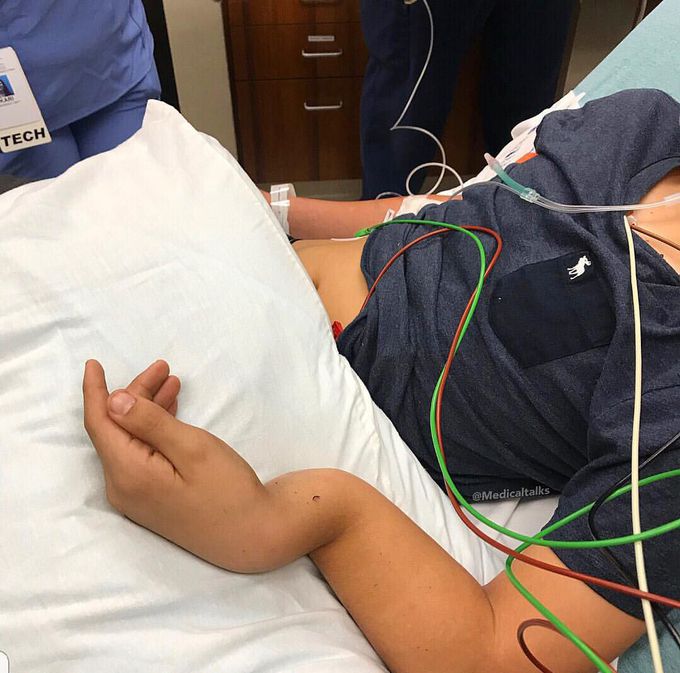


Ulnar shaft fracture
This patient fell off a porch landing at a somewhat 90 degree angle, sustaining a closed distal 1/3 radius and ulnar shaft fracture!! The radius and ulna are bound together at the proximal and distal radioulnar joints and act as a ring. Like elsewhere in the body, it is difficult only to fracture one bone if there is a bony ring. If the radius or ulna is fractured, it is likely that either there is another fracture or one of the radioulnar joints has been damaged. Fractures of the forearm can occur near the wrist at the farthest (distal) end of the bone, in the middle (shaft) of the forearm, or near the elbow at the top (proximal) end of the bone. Strong force is required to break both bone at the shaft. This is clearly the case here! An x-ray of the forearm will determine the type of injury that has occurred. In most cases, there will either be a paired radial and ulnar fracture or an isolated radial fracture and dislocation of the distal or proximal radioulnar joint. These fractures are often accompanied by a significant amount of displacement and require reduction. Photo by @jacobordaz
Does an injury like this require surgical fixation, or will manual decompression to set and casting suffice?
Hemodynamic stimuli&nonhemodynamic stimuliEffects of sugar on teeth

